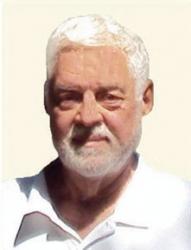Donald Trump is now the Republican presumptive presidential nominee, and Hillary Clinton, despite a pesky challenge by Bernie Sanders, appears to have a lock on the Democrat nomination. Thus, speculation has turned to whom they will choose as their running mates … the person who will be “just a heartbeat away from the presidency.”
Before considering this year’s choice of VPs, it might be worthwhile to look back at some of the better — and worse — running mates of the past.
Nine vice presidents have had to step into the oval office. John Tayler (1841), Millard Fillmore (1850), Calvin Coolidge (1923) and Harry Truman (1945) ascended to the presidency when the elected president died in office. Four got there when the president was assassinated: Andrew Johnson (1865), Chester Arthur (1881), Theodore Roosevelt (1901) and Lyndon Johnson (1963).
Gerald Ford became president when Richard Nixon resigned in 1974. Ford was never elected vice president; he was appointed to the position when Spiro Agnew, the elected VP, resigned to avoid prosecution on corruption charges.
As far as being a springboard to the presidency, serving as vice president is more like a path to obscurity. Only two sitting vice presidents have succeeded in getting elected president while in office: Martin Van Buren in 1837 and George H.W. Bush in 1989. Richard Nixon was elected president in 1968 and again in 1972, but only after having lost to John Kennedy in 1960 when he was Eisenhower’s VP. Lyndon Johnson and Harry Truman were already serving as president when they were elected.
Al Gore, Walter Mondale and Gerald Ford ran for president, but were defeated. Spiro Agnew resigned from office. Lyndon Johnson was elected to one term as president and turned out to be so unpopular he didn’t run for a second term. As mentioned before, Richard Nixon failed in his first bid for the presidency, but made a comeback and was elected president after running for governor of California in 1962 and losing.
What about the unsuccessful vice presidential candidates — did they help or hurt their ticket? That is a subjective call. But I would suggest Paul Ryan, Jack Kemp and Lloyd Bentsen were pluses for their ticket. Among the least helpful running mates, I would list William Miller, an obscure right-wing congressman from upstate New York, whom Barry Goldwater chose as his running mate; John Edwards, the philandering narcissist who was an embarrassment to John Kerry; Sarah Palin, the “maverick” political novice John McCain tapped; and Dan Quayle, who ran with George H.W. Bush.
Then there is Thomas Eagleton, who resigned as George McGovern’s running mate in 1972 when it became public that he suffered bouts of depression throughout his life, resulting in several hospitalizations.
In my opinion, the best vice presidential pick — and one that changed the course of the country — took place in 1944 when the Democrats dumped Henry Wallace, the sitting VP, in favor of Harry Truman. They knew Roosevelt was unlikely to live through his fourth term, and they didn’t want Wallace, a radical New Dealer further to the left than Roosevelt, to become president.
After he was dumped, Wallace left the Democrat Party and ran unsuccessfully against Truman as the Progressive Party candidate in 1948.
When it comes to the current presidential race, I don’t expect Donald Trump to go the conventional route of picking someone who might help him carry a critical state or region as John Kennedy did when he picked Lyndon Johnson — a man he personally detested — or someone who would help unify the party, as Ronald Reagan did when he chose George H.W. Bush.
Nor do I think he will pick someone like Newt Gingrich, who is going to cringe every time he says something politically incorrect or factually inaccurate, or someone who might overshadow him with their policy knowledge, such as Paul Ryan or John Kasich.
The vice president really doesn’t have any significant duties. So unless he redefines the job to make it more meaningful, I think Trump will go for “arm candy” — someone who will smile and make him look good on the podium. Perhaps he will choose a person like Ben Carson or Chris Christie, or maybe even a woman to show he’s not sexist.
When it comes to Hillary, if she gets the nomination — and I consider that still a big “if” — I doubt she will go for someone on the left. Bernie Sanders has already pulled her so far left it will be difficult for her to reposition herself in the political mainstream, which leaves out Elizabeth Warren. She doesn’t need help with the black or Hispanic vote, and there isn’t much she can do about the trust issue except pray that the FBI doesn’t recommend indicting her on criminal charges.
If I were Bill giving her advice on whom to pick as her running mate, I would suggest a military person — someone like Gen. Martin Dempsey, the former chairman of the Joint Chiefs of Staff. That choice might anger some Sanders supporters. But Dempsey could go after Trump on issues of foreign policy and the fight on terrorism, leaving Hillary to focus on domestic issues.
But what do I know? A year ago, I wouldn’t have guessed we would be looking at a Trump versus Clinton or possibly a Trump versus Sanders presidential race.














Comments are closed.